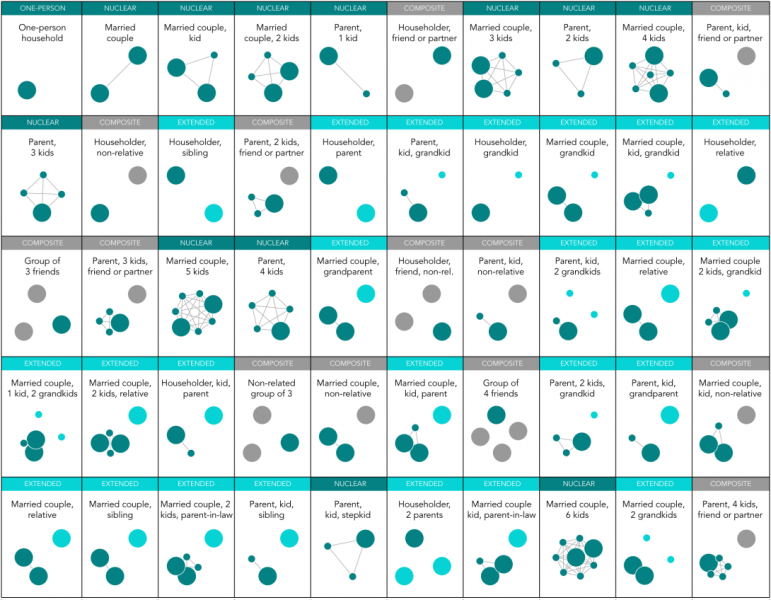There is a great (and increasing) diversity of family types in this country, and planners should take notice.
The importance of appreciating the difficulty posed by planning for a “blended family” is a topic that advisors (and this site) have harped on for some time. Yet, many professionals still continue to operate as if the typical “two parents and 1.5 children all living under one roof” nuclear family paradigm of yesteryear is still universally applicable. For those who grew up in and surrounded by such “ideal” families, it can be understandably difficult to fully appreciate the sheer number of potential familial permutations that exist, let alone how to properly plan for them.
Recently, statistician Nathan Yau collected some research for FlowingData.com that may help advisors better visualize that diversity. This infographic, compiled from data gathered by the 2010-2014 American Community Survey, covers the top 50 most common family types in America. (Start from the top left and work your way to the right across each row before dropping down to the next one—like reading a paragraph.)

Larger circles represent adults, while smaller ones are children or grandchildren. The circles are colored dark green for those in the household’s family nucleus, light green for family members outside the nucleus and grey for non-relatives. The household types are categorized based on the definitions used by the United Nations.
In totality, these 50 types represent about 94 percent of the families in America. Though “nuclear” families still make up the majority, it’s a slim margin at only 54 percent. That leaves an awful lot of families out there that don’t fit the “typical” model adhered to by many planners and represents a great opportunity for those willing to expand their understandings of “family.” After all, by Yau's count, the 6 percent of American families that aren't represented in the infographic consist of another 10,226 permutations.




